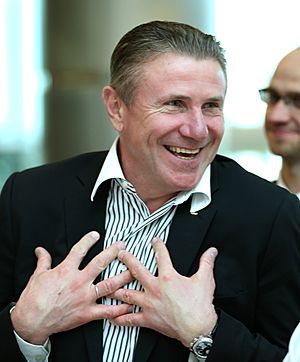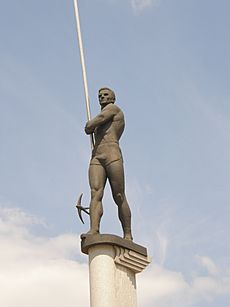Sergey Bubka facts for kids

Bubka in 2013
|
||||||||||||||||||||||||||||||||||||||||||||||||||||||||||||||||||||||||||||||||||||||||||||||||||||||||||||||||||||||||||||||||||||||||||||||||||||||||||||||||||||||||||||||||||||||||||||||||||||||
| Personal information | ||||||||||||||||||||||||||||||||||||||||||||||||||||||||||||||||||||||||||||||||||||||||||||||||||||||||||||||||||||||||||||||||||||||||||||||||||||||||||||||||||||||||||||||||||||||||||||||||||||||
|---|---|---|---|---|---|---|---|---|---|---|---|---|---|---|---|---|---|---|---|---|---|---|---|---|---|---|---|---|---|---|---|---|---|---|---|---|---|---|---|---|---|---|---|---|---|---|---|---|---|---|---|---|---|---|---|---|---|---|---|---|---|---|---|---|---|---|---|---|---|---|---|---|---|---|---|---|---|---|---|---|---|---|---|---|---|---|---|---|---|---|---|---|---|---|---|---|---|---|---|---|---|---|---|---|---|---|---|---|---|---|---|---|---|---|---|---|---|---|---|---|---|---|---|---|---|---|---|---|---|---|---|---|---|---|---|---|---|---|---|---|---|---|---|---|---|---|---|---|---|---|---|---|---|---|---|---|---|---|---|---|---|---|---|---|---|---|---|---|---|---|---|---|---|---|---|---|---|---|---|---|---|---|---|---|---|---|---|---|---|---|---|---|---|---|---|---|---|---|
| Native name | Сергій Назарович Бубка | |||||||||||||||||||||||||||||||||||||||||||||||||||||||||||||||||||||||||||||||||||||||||||||||||||||||||||||||||||||||||||||||||||||||||||||||||||||||||||||||||||||||||||||||||||||||||||||||||||||
| Full name | Serhiy Nazarovych Bubka | |||||||||||||||||||||||||||||||||||||||||||||||||||||||||||||||||||||||||||||||||||||||||||||||||||||||||||||||||||||||||||||||||||||||||||||||||||||||||||||||||||||||||||||||||||||||||||||||||||||
| Nationality | Ukrainian | |||||||||||||||||||||||||||||||||||||||||||||||||||||||||||||||||||||||||||||||||||||||||||||||||||||||||||||||||||||||||||||||||||||||||||||||||||||||||||||||||||||||||||||||||||||||||||||||||||||
| Born | 4 December 1963 Luhansk, Ukrainian SSR, Soviet Union |
|||||||||||||||||||||||||||||||||||||||||||||||||||||||||||||||||||||||||||||||||||||||||||||||||||||||||||||||||||||||||||||||||||||||||||||||||||||||||||||||||||||||||||||||||||||||||||||||||||||
| Education | PhD in pedagogy, physical culture | |||||||||||||||||||||||||||||||||||||||||||||||||||||||||||||||||||||||||||||||||||||||||||||||||||||||||||||||||||||||||||||||||||||||||||||||||||||||||||||||||||||||||||||||||||||||||||||||||||||
| Alma mater | Ukrainian Academy of Pedagogical Science, Kyiv State Institute of Physical Culture | |||||||||||||||||||||||||||||||||||||||||||||||||||||||||||||||||||||||||||||||||||||||||||||||||||||||||||||||||||||||||||||||||||||||||||||||||||||||||||||||||||||||||||||||||||||||||||||||||||||
| Years active | 1981–2001 | |||||||||||||||||||||||||||||||||||||||||||||||||||||||||||||||||||||||||||||||||||||||||||||||||||||||||||||||||||||||||||||||||||||||||||||||||||||||||||||||||||||||||||||||||||||||||||||||||||||
| Height | 1.83 m (6 ft 0 in) | |||||||||||||||||||||||||||||||||||||||||||||||||||||||||||||||||||||||||||||||||||||||||||||||||||||||||||||||||||||||||||||||||||||||||||||||||||||||||||||||||||||||||||||||||||||||||||||||||||||
| Weight | 80 kg (176 lb) | |||||||||||||||||||||||||||||||||||||||||||||||||||||||||||||||||||||||||||||||||||||||||||||||||||||||||||||||||||||||||||||||||||||||||||||||||||||||||||||||||||||||||||||||||||||||||||||||||||||
| Chair of the NOC of Ukraine | ||||||||||||||||||||||||||||||||||||||||||||||||||||||||||||||||||||||||||||||||||||||||||||||||||||||||||||||||||||||||||||||||||||||||||||||||||||||||||||||||||||||||||||||||||||||||||||||||||||||
| In office 23 June 2005 – 17 November 2022 |
||||||||||||||||||||||||||||||||||||||||||||||||||||||||||||||||||||||||||||||||||||||||||||||||||||||||||||||||||||||||||||||||||||||||||||||||||||||||||||||||||||||||||||||||||||||||||||||||||||||
| Preceded by | Viktor Yanukovych | |||||||||||||||||||||||||||||||||||||||||||||||||||||||||||||||||||||||||||||||||||||||||||||||||||||||||||||||||||||||||||||||||||||||||||||||||||||||||||||||||||||||||||||||||||||||||||||||||||||
| Succeeded by | Vadym Gutzeit | |||||||||||||||||||||||||||||||||||||||||||||||||||||||||||||||||||||||||||||||||||||||||||||||||||||||||||||||||||||||||||||||||||||||||||||||||||||||||||||||||||||||||||||||||||||||||||||||||||||
| Sport | ||||||||||||||||||||||||||||||||||||||||||||||||||||||||||||||||||||||||||||||||||||||||||||||||||||||||||||||||||||||||||||||||||||||||||||||||||||||||||||||||||||||||||||||||||||||||||||||||||||||
| Country | ||||||||||||||||||||||||||||||||||||||||||||||||||||||||||||||||||||||||||||||||||||||||||||||||||||||||||||||||||||||||||||||||||||||||||||||||||||||||||||||||||||||||||||||||||||||||||||||||||||||
| Sport | Athletics | |||||||||||||||||||||||||||||||||||||||||||||||||||||||||||||||||||||||||||||||||||||||||||||||||||||||||||||||||||||||||||||||||||||||||||||||||||||||||||||||||||||||||||||||||||||||||||||||||||||
| Event(s) | Pole vault | |||||||||||||||||||||||||||||||||||||||||||||||||||||||||||||||||||||||||||||||||||||||||||||||||||||||||||||||||||||||||||||||||||||||||||||||||||||||||||||||||||||||||||||||||||||||||||||||||||||
| Turned pro | 1981 | |||||||||||||||||||||||||||||||||||||||||||||||||||||||||||||||||||||||||||||||||||||||||||||||||||||||||||||||||||||||||||||||||||||||||||||||||||||||||||||||||||||||||||||||||||||||||||||||||||||
| Coached by | Vitaly Petrov (first coach) | |||||||||||||||||||||||||||||||||||||||||||||||||||||||||||||||||||||||||||||||||||||||||||||||||||||||||||||||||||||||||||||||||||||||||||||||||||||||||||||||||||||||||||||||||||||||||||||||||||||
| Retired | 2001 | |||||||||||||||||||||||||||||||||||||||||||||||||||||||||||||||||||||||||||||||||||||||||||||||||||||||||||||||||||||||||||||||||||||||||||||||||||||||||||||||||||||||||||||||||||||||||||||||||||||
|
Medal record
|
||||||||||||||||||||||||||||||||||||||||||||||||||||||||||||||||||||||||||||||||||||||||||||||||||||||||||||||||||||||||||||||||||||||||||||||||||||||||||||||||||||||||||||||||||||||||||||||||||||||
| Updated on 8 September 2012. | ||||||||||||||||||||||||||||||||||||||||||||||||||||||||||||||||||||||||||||||||||||||||||||||||||||||||||||||||||||||||||||||||||||||||||||||||||||||||||||||||||||||||||||||||||||||||||||||||||||||
Serhiy Bubka is a famous Ukrainian former pole vaulter. He was born on December 4, 1963. He competed for the Soviet Union until 1991, then for Ukraine. Bubka was named Athlete of the Year twice by Track & Field News. In 2012, he joined the International Association of Athletics Federations Hall of Fame.
Bubka won six world championships and an Olympic gold medal. He broke the world record for men's pole vault an amazing 35 times! He was the first pole vaulter to jump over 6.0 meters and 6.10 meters.
He held the indoor world record of 6.15 meters for almost 21 years. He set this record on February 21, 1993, in Donetsk, Ukraine. His outdoor world record was 6.14 meters, set on July 31, 1994. This record stood for over 26 years.
Bubka is a Senior Vice President of World Athletics. He also led the National Olympic Committee of Ukraine from 2005 to 2022. He is an Honorary Member of the International Olympic Committee (IOC). His older brother, Vasiliy Bubka, was also a successful pole vaulter.
Contents
About Serhiy Bubka
Serhiy Bubka was born in Luhansk. He started as a track-and-field athlete, trying the 100-meter dash and long jump. He became a world champion when he focused on the pole vault. In 1983, he won the world championship in Helsinki, Finland. The next year, he set his first world record, jumping 5.85 meters.
He competed for Soviet teams until 1991. After that, he signed a contract with Nike. This deal gave him special bonuses for each new world record he set.
His son, Sergei Bubka, is a former professional tennis player.
From 2002 to 2006, Bubka was a member of the Ukrainian parliament, called the Verkhovna Rada. He worked on committees related to youth, physical culture, sport, and tourism. In March 2022, he shared his love for his home country, Ukraine, saying: "Ukraine will win."
Amazing Sporting Career
Serhiy Bubka began his international career in 1981. He finished seventh at the European Junior Championship. His big breakthrough came at the 1983 World Championship in Helsinki. There, a less-known Bubka won gold, clearing 5.70 meters. The years that followed showed Bubka's incredible skill. He kept setting new records in pole vaulting.
He set his first world record of 5.85 meters on May 26, 1984. He quickly improved it to 5.88 meters a week later. Then, a month after that, he jumped 5.90 meters. On July 13, 1985, in Paris, he became the first person to clear 6.00 meters. Bubka continued to break his own record for the next 10 years. His best jump and world record was 6.14 meters in 1994. He used UCS Spirit poles for most of his later career.
He was the first athlete to jump over 6.10 meters. This happened in San Sebastián, Spain, in 1991. Bubka raised the world record by 21 centimeters between 1984 and 1994. He cleared 6.00 meters or higher 45 times!
Bubka officially stopped competing in pole vault in 2001. He had a special ceremony at his "Pole Vault Stars" event in Donetsk.
Olympic Challenges
Bubka's first chance at the Olympics was in 1984. However, the Soviet Union boycotted those games. In 1988, Bubka competed in the Seoul Olympics. He won his only Olympic gold medal there, clearing 5.90 meters.
At the Barcelona Olympics in 1992, he failed to clear the bar in his first three tries. This meant he was out of the competition. In 1996, at the Atlanta Olympics, he had to pull out because of a heel injury. He didn't even get to make any attempts. Finally, at the Sydney Olympics in 2000, he was eliminated from the final. This happened after three unsuccessful attempts at 5.70 meters.
World Championship Wins
Bubka won the pole vault event at six IAAF World Championships in Athletics in a row. This amazing streak lasted from 1983 to 1997.
| Year | Competition | Venue | Position | Winning height |
|---|---|---|---|---|
| 1983 | World Championships | Helsinki | 1st | 5.70 m (18 ft 8+3⁄8 in) |
| 1987 | World Championships | Rome | 1st | 5.85 m (19 ft 2+5⁄16 in) |
| 1991 | World Championships | Tokyo | 1st | 5.95 m (19 ft 6+5⁄16 in) |
| 1993 | World Championships | Stuttgart | 1st | 6.00 m (19 ft 8+3⁄16 in) |
| 1995 | World Championships | Gothenburg | 1st | 5.92 m (19 ft 5+1⁄8 in) |
| 1997 | World Championships | Athens | 1st | 6.01 m (19 ft 8+5⁄8 in) |
How Bubka Broke Records
Bubka broke the world record for men's pole vault 35 times. He set 17 outdoor world records and 18 indoor world records. He only lost his outdoor world record once. This happened on August 31, 1984, when Thierry Vigneron of France broke it. But Bubka quickly took the record back minutes later on the same day!
| Height | Date | Place |
|---|---|---|
| 6.14 m (20 ft 1+11⁄16 in) | 31 July 1994 | |
| 6.13 m (20 ft 1+5⁄16 in) | 19 September 1992 | |
| 6.12 m (20 ft +7⁄8 in) | 30 August 1992 | |
| 6.11 m (20 ft +5⁄8 in) | 13 June 1992 | |
| 6.10 m (20 ft +3⁄16 in) | 5 August 1991 | |
| 6.09 m (19 ft 11+13⁄16 in) | 8 July 1991 | |
| 6.08 m (19 ft 11+3⁄8 in) | 9 June 1991 | |
| 6.07 m (19 ft 11 in) | 6 May 1991 | |
| 6.06 m (19 ft 10+5⁄8 in) | 10 July 1988 | |
| 6.05 m (19 ft 10+3⁄16 in) | 9 June 1988 | |
| 6.03 m (19 ft 9+3⁄8 in) | 23 June 1987 | |
| 6.01 m (19 ft 8+5⁄8 in) | 8 June 1986 | |
| 6.00 m (19 ft 8+3⁄16 in) | 13 June 1985 | |
| 5.94 m (19 ft 5+7⁄8 in) | 31 August 1984 | |
| 5.90 m (19 ft 4+5⁄16 in) | 13 July 1984 | |
| 5.88 m (19 ft 3+1⁄2 in) | 2 June 1984 | |
| 5.85 m (19 ft 2+5⁄16 in) | 26 May 1984 |
| Height | Date | Place |
|---|---|---|
| 6.15 m (20 ft 2+1⁄8 in) | 21 February 1993 | |
| 6.14 m (20 ft 1+11⁄16 in) | 13 February 1993 | |
| 6.13 m (20 ft 1+5⁄16 in) | 22 February 1992 | |
| 6.12 m (20 ft +7⁄8 in) | 23 March 1991 | |
| 6.11 m (20 ft +5⁄8 in) | 19 March 1991 | |
| 6.10 m (20 ft +3⁄16 in) | 15 March 1991 | |
| 6.08 m (19 ft 11+3⁄8 in) | 9 February 1991 | |
| 6.05 m (19 ft 10+3⁄16 in) | 17 March 1990 | |
| 6.03 m (19 ft 9+3⁄8 in) | 11 February 1989 | |
| 5.97 m (19 ft 7 in) | 17 March 1987 | |
| 5.96 m (19 ft 6+5⁄8 in) | 15 January 1987 | |
| 5.95 m (19 ft 6+5⁄16 in) | 28 February 1986 | |
| 5.94 m (19 ft 5+7⁄8 in) | 21 February 1986 | |
| 5.92 m (19 ft 5+1⁄8 in) | 8 February 1986 | |
| 5.87 m (19 ft 3+1⁄8 in) | 15 January 1986 | |
| 5.83 m (19 ft 1+1⁄2 in) | 10 February 1984 | |
| 5.82 m (19 ft 1+1⁄8 in) | 1 February 1984 | |
| 5.81 m (19 ft +11⁄16 in) | 15 January 1984 |
Bubka's Pole Vault Technique
Bubka used a special way to hold the pole. He gripped it higher than most other vaulters. This gave him extra power, though he said it wasn't just about the grip.
His coach, Vitaly Petrov, helped him create a unique technique. This method allowed Bubka to keep pushing energy into the pole as he rose. Most other pole vaulters focused on bending the pole a lot right when they took off. Bubka's method, like that of Kjell Isaksson, focused on driving the pole upwards. He combined this with a very fast running speed. This technique helped him use the pole's springiness to gain even more height during his swing.
Awards and Recognition
Serhiy Bubka received many awards for his amazing career:
- L'Équipe Champion of Champions (1985)
- European Sportsperson of the Year (1985)
- Track & Field News Athlete of the Year (1988)
- Track & Field News Athlete of the Year (1991)
- United Press International Athlete of the Year Award (1991)
- Laureus World Sports Awards discretionary award winner (2008)
See also
 In Spanish: Serguéi Bubka para niños
In Spanish: Serguéi Bubka para niños
- 6 meters club


